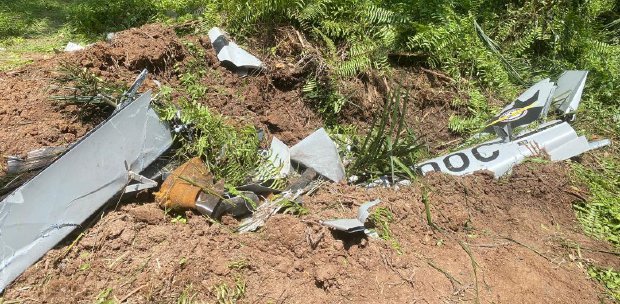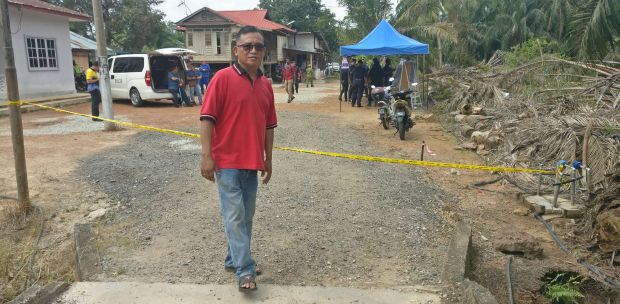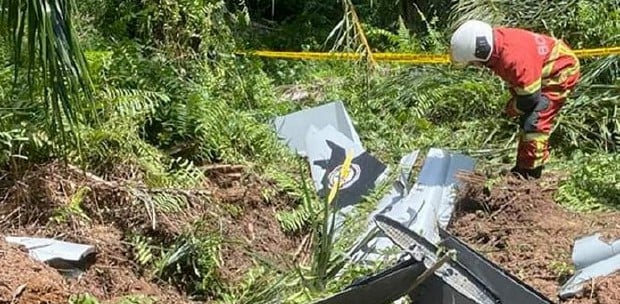Investigators probing the cause of the Elmina plane crash need to rely on ground evidence due to the lack of a crucial component — flight data recorder.
Investigators need to collect and assemble the plane debris to find out why the Beechcraft Model 390 (Premier 1) aircraft crashed two minutes before landing at the Sultan Abdul Aziz Shah Airport in Subang on Thursday.
They also need to examine the cockpit voice recorder, which was retrieved from the crash site at 10.20pm the same day.
Universiti Kuala Lumpur Malay-sian Institute of Aviation Technology aviation search and rescue department head Associate Professor Major Dr Mohd Harridon Mohamed Suffian said investigators need to quickly collect and assemble the debris to find out why the plane crashed.
He said the plane's engine components were among the crucial parts that could help determine the cause of the crash.
"The investigation team can scour the (crash) site.
"The debris can give an approximate indication of the stress and strain on some components of the aircraft and this can provide a better picture on the intensity of the crash.
"Assembling the debris is important as it is like assembling a jigsaw puzzle to unearth different perspectives.
"It is important to get a hold of the debris as soon as possible to avoid contamination due to weather exposure and heat and humidity changes at the crash site."
He said the authorities should reach out to members of the public who might have parts of the plane as the debris field was large. He said the final moments of flight N28JV indicated that it experienced a catastrophic loss of flight controls, possibly due to engine flameout, overloading or a mechanical malfunction.
Harridon said it was possible
a "control freeze" occurred, preventing the pilot's input from being translated into movement.
He said during a "control freeze", the elevators, or flight control surfaces at the rear of an aircraft which control the aircraft's pitch and angle of attack and the lift of the wing, and other components, such as ailerons or hinged flight control surface which controls flight movement, cannot be dynamically moved by the pilot.
He said a control system failure was a plausible cause of this.
Asked about the lack of a mayday call, he said the pilots could have been occupied with navigating the plane, leaving them with no room to communicate with the air traffic controller.
"During emergency situations, pilots are usually governed by the rules they learnt during flight training. It is simple — aviate, navigate and communicate.
"Pilots fly airplanes according to a sequence, with priority to controlling the aircraft and lastly communicating with the air traffic controller on emergencies.
"It is probable the pilots had little time to deal with the emergency and continued to aviate and navigate and were left with no time to communicate."
Retired Royal Malaysian Air Force captain Abdul Rahmat Omar Mohd Haniff believed the aircraft experienced a catastrophic loss of control, which could be caused by mechanical failure, human error or weather.
He said there were cases of pilots accidentally cutting off the fuel supply to the engines by throttling back the engine past idle, but he believed this could not be the case given the speed of the ill-fated aircraft, which seemed normal.
He said bad weather was an unlikely a factor as the weather was good during the incident.
"Either way, they had very little time to overcome the problem, which would explain the lack of a mayday call."
He said although the plane had no flight data recorder, investigators could listen to the cockpit voice recorder and examine the aircraft debris for clues.
"If there are display gauges that have somewhat survived, they can look at the final readings.
"Many aircraft incidents were investigated in the past with zero recording devices."
Ten people were killed when the Beechcraft aircraft crashed into the Guthrie Corridor Expressway in Elmina, Shah Alam, while en route from Langkawi to the Sultan Abdul Aziz Shah Airport.
On board were pilot Shahrul Kamal Roslan, 41, his second in command, Heikal Aras Abdul Azim, 45, Pahang Local Government, Housing, Environment and Green Technology Committee chairman Datuk Seri Johari Harun, 53, his personal assistant, Idris Abdol Talib @ Ramali, 41, Kharil Azwan Jamaludin, 43, Shaharul Amir Omar, 49, Mohamad Naim Fawwaz Mohamed Muaidi, 35, and Muhammad Taufiq Mohd Zaki, 37.
Motorcyclist Muhamad Hafiz Muhamad Salleh, 32, died when the plane crashed into him.
A 10th victim, who was in a car when the plane crashed, has yet to be identified.





